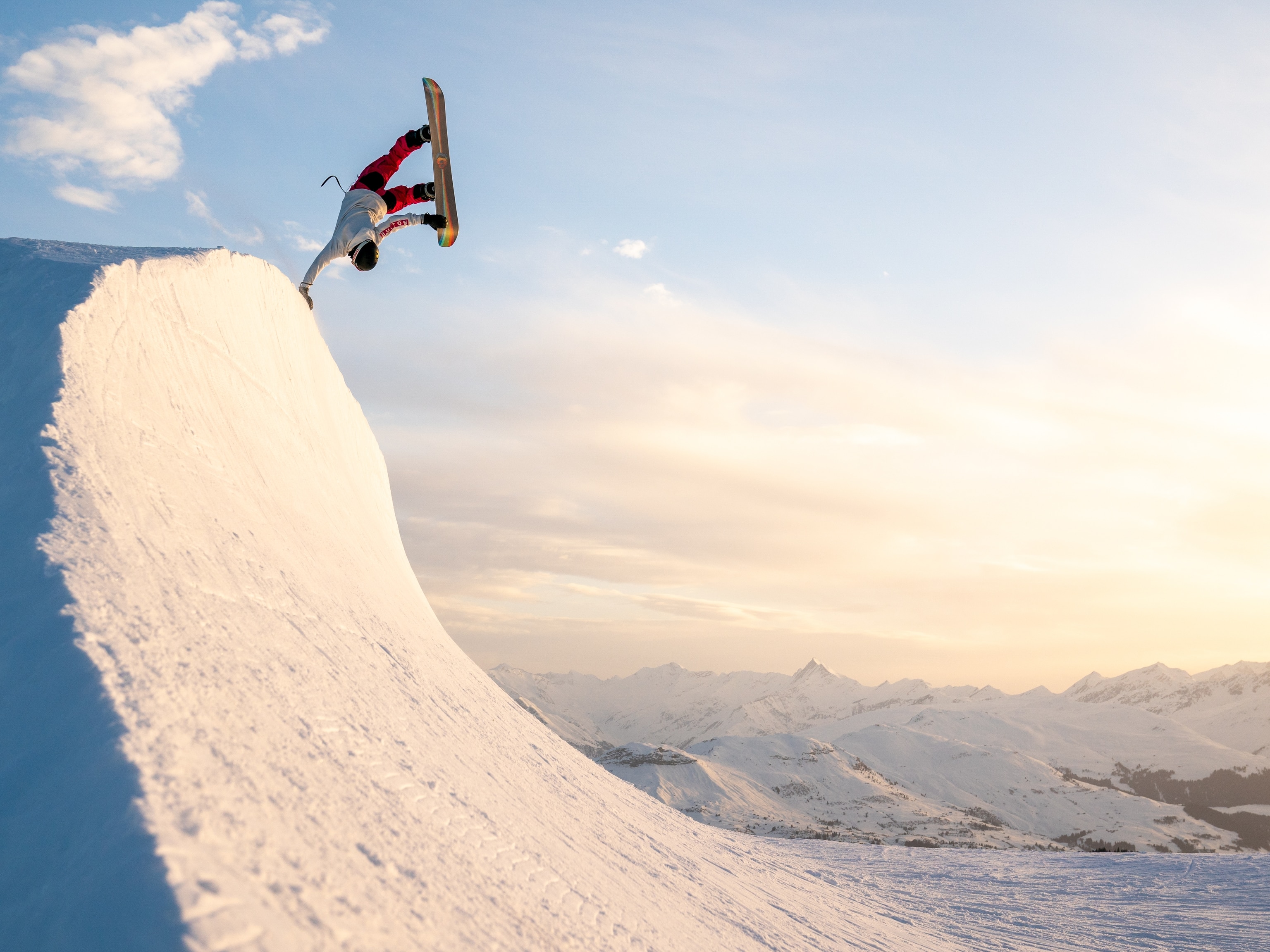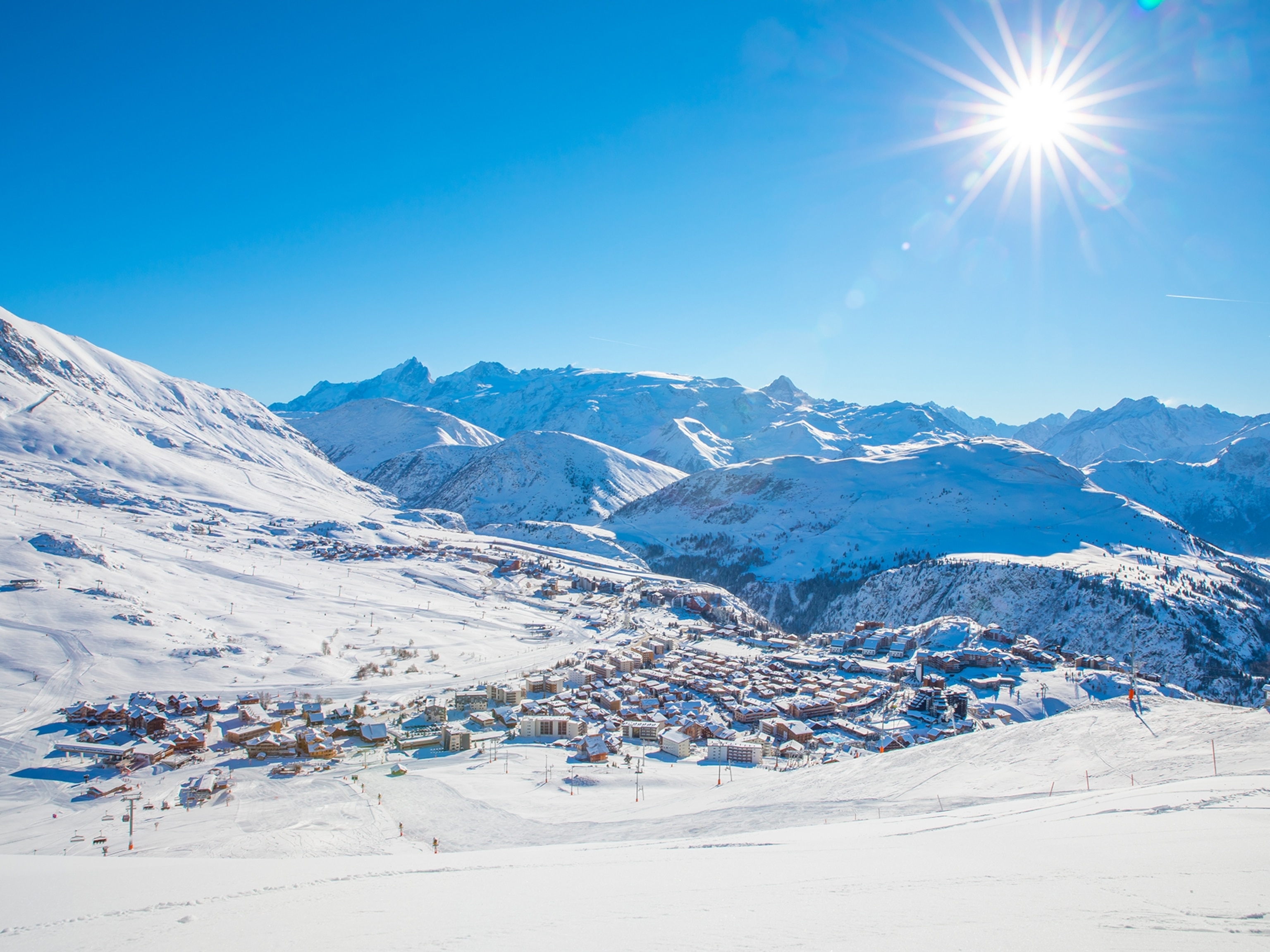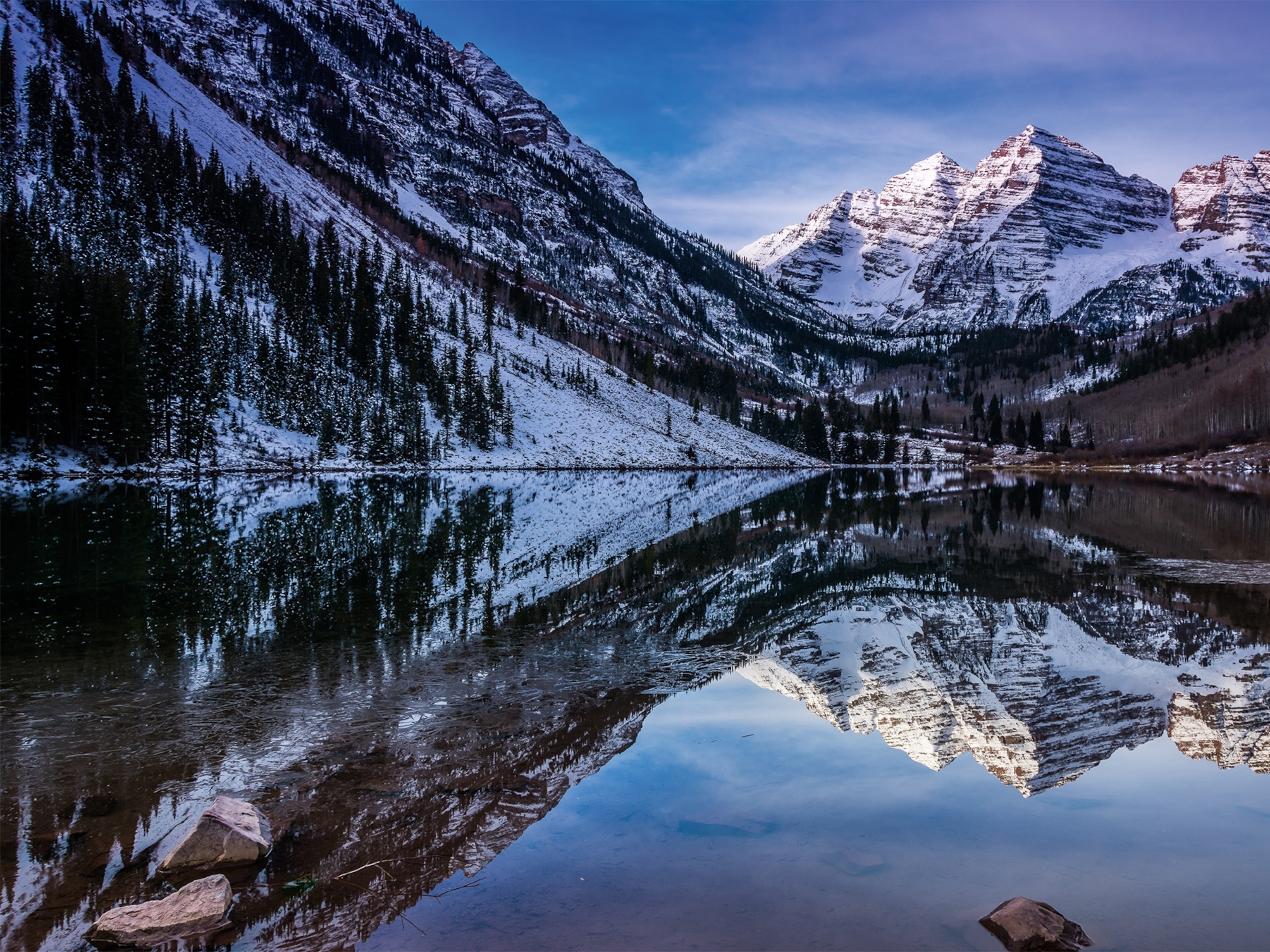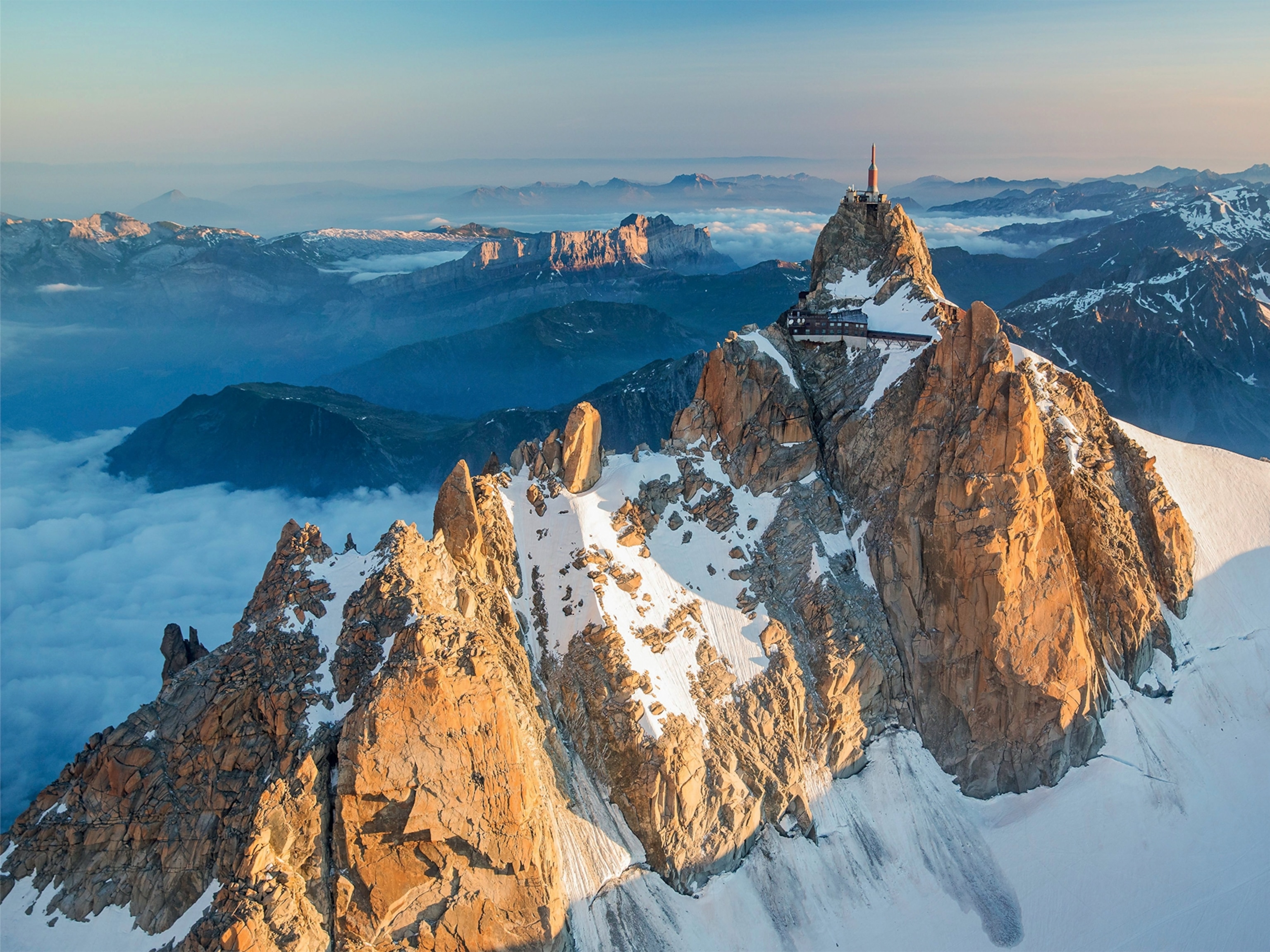The French Alpine resort of Serre Chevalier is a top spot for sustainable skiing
The largest ski area in the southern Alps has made a huge investment in sustainable energy and environmentally responsible infrastructure.
To say the Luc Alphand slope in Chantemerle ends abruptly is an understatement. The piste, graded as a black run, is more like a sheer-drop slide at a giant’s play park, coming to a dramatic halt on the pavement in the middle of town. As I sit in the breakfast room of the Grand Hôtel with a ringside view of skiers barrelling their way down the mountain, wondering whether I’ll be brave enough to join the Luc at some point, I’m all too aware that this dilemma may soon be a thing of the past. Warming temperatures and a lack of snow in the valley mean that the slope, like many around the Alps, needs a lot of artificial snow, using up precious resources.
“There are people who say that skiing is finished — that we have to think of something else to do — but it’s not true,” says Patrick Arnaud, managing director of Serre Chevalier Vallée Briançon, a resort in France’s southern Alps. “Skiing has been possible down to 1,200 metres for the past 80 years but maybe that will move to up to 1,400 metres. We have to accept we may need to stop skiing at the lower levels.”
Serre Chevalier Vallée Briançon is the biggest ski area in the southern Alps, with 155 miles of varied pistes and powder bowls, made up of a string of small valley towns and an interlinked mountain chain. The area stretches from the spa town of Le Monêtier-les-Bains through La Salle les Alpes and my base in Chantemerle to bigger Briançon, known for its UNESCO-inscribed Fortifications of Vauban and its lofty position as France’s highest town. Owned by Compagnie des Alpes, it’s an exemplar of sustainable skiing. It’s operated on 100% renewable energy since 2011 and is aiming for net zero emissions by 2030. An investment of €4m (£3.4m) in solar panels, hydroelectricity and wind turbines has been made in the region over the past six years with the aim to sustainably produce 30% of the energy it needs to operate.

Take refuge
In Briançon, I find shops with a distinctly Italian vibe — it’s only nine miles to the border via the Col d’Izoard pass, after all — while the peeling terracotta and faded raspberry paints of the old town are pure Provence. My guide, Lisa Gibello, sums up the sensibility of the locals: “We’re montagnards for sure,” she says, referring to denizens of the mountains. “But we’re less posh — less Gucci — than people from the northern Alps and we have the laid-back vibe of Mediterraneans.” Above all, says Lisa, locals are sporty. Whether it’s skiing in winter, cycling and kayaking in summer or hiking in autumn, when the leaves of the larch trees turn a beautiful orange — in contrast to the pines of the north — outdoors is where it’s at.
With 80% of Serre Chevalier’s pistes at 2,000 metres and above, and the skiable domain a long north-facing mountain ridge, I assumed the resort would have a hanging-off-the-edge-of-a-mountain feel, but thanks to its densely tree-fringed hillsides and the oomph of the southern sun, it feels much less exposed than ski resorts further north.
After breakfast, I clamber into the gondola — a jangle of skis, poles, boots and baggage because I’m checking in to a mountain refuge for the night. I head eastward, skiing a mix of secluded single runs through trees and vast open spaces with far-ranging views. High up, the snow is in great condition as I make my way to the Prorel gondola for a dizzying aerial view of Briancon’s fortifications.

Some claim it’s possible to get from one end of the resort to the other and back in a day, but that Mediterranean vibe has kicked in and I think, why rush? I stop for a croque monsieur in the sun, get lured by the scent of the quirky Cabane à Sucre mountaintop sweet shop, race some kids in a mountain kart, then retire to my mountain refuge for a siesta when the afternoon snowfall starts to lay its thick blanket.
Varied activities like these are a way of getting visitors to stay high up the mountain for longer. The more people stay on top, Patrick says, the less artificial snow and grooming is required on the lower slopes and the more energy can be saved.
Serre Chevalier is adapting to climate change in a variety of ways. This year, using biofuel to power its grooming machines has cut its carbon footprint by 90% — and they’re grooming less, using drones to pinpoint where artificial snow is needed. Lifts are also being slowed down where possible (reducing speed saves energy) and when a gondola lift is dismantled, viable parts get used in the construction a new, more efficient one.
“We want to prove that ski areas are ideal places to produce renewable energy because of the climate and geography — there’s wind, sun, water and vertical drop,” says Patrick. The proof of the pudding? Serre Chevalier recently passed its target of producing 30% of the energy it uses through solar panels, windmills and hydroelectric turbines.
All this work is a test bed for other French resorts. Patrick is proud of its success and eager to do more. “In Serre Chevalier, we’ve been doing this for seven years. We’re running before the others are starting to walk, and we love it,” he says. “We want to stay in front but of course the goal is for everybody to be doing the same.”
A direct overnight train connects Paris with Briançon, nine miles from Serre Chevalier.
The cloest airports are Turin, 2h; Lyon and Chambéry, 2.5h.
Grand Hôtel, Chantemerle has doubles from €140 (£120), B&B, and €240 (£205), B&B, at the mountain refuge.
For more info visit serre-chevalier.com
To subscribe to National Geographic Traveller (UK) magazine click here. (Available in select countries only).







